 |
Focus features two in-depth reviews each month of fine art, architecture and design exhibitions and events at art museums, galleries and alternative spaces around Japan. The contributors are non-Japanese art critics living in Japan. |
|
|
 |
 |
 |
Contemporary Ceramics in Japan: Kikuchi Biennale V at Musée Tomo
Susan Rogers Chikuba |
 |
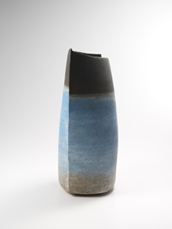 |
|
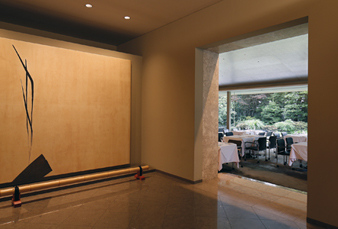 |
|
Mitsukuni Misaki's Vase decorated with slips won the Kikuchi Biennale V Grand Prize for its meticulous slip work, dynamic contrast of sharp and rounded planes, and strikingly elegant blue. Starting with a fine rope pattern, Misaki applied multicolored engobes in layers and stages to yield the piece's opalescent look and weathered texture. Minimalist brushwork by Toko Shinoda, such as Portrait of a lady shown here, graces the walls of Musée Tomo, an art oasis in central Tokyo.
Left photo by Shigeharu Omi / Toshiyuki Otsuka; right photo by Jeff Amas |
Lovers of contemporary ceramics will not want to miss the fifth competitive biennale exhibition now showing through September 1 at Musée Tomo in Toranomon. The four dozen works on display, by potters aged 27 to 74 and hailing from all but six of Japan's 47 prefectures as well as Korea, present an exciting range of both veteran and up-and-coming talent. (For an earlier report on Musée Tomo and the fourth Kikuchi Biennale, see the May 2011 edition of Focus.
A panel of six judges active in academia and the art curation and ceramics fields selected the 48 works from a total of 296 submissions, naming one Grand Prize, two Merit Prizes, and ten Honorable Mentions. But the most telling statistic is that a solid 66 percent of this year's finalists are in their twenties, thirties, or forties -- the youngest field of contestants since the award was established in 2005. That's good news for pottery enthusiasts and collectors.
 |
|
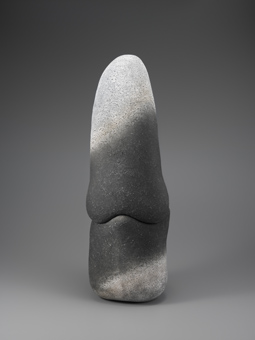 |
|
|
|
| Celadon specialist Atsuko Kubota garnered a Merit Prize for her Pale-blue-glazed plate with design of autumn grass. Its intricate patterns -- painstakingly rendered in plaster from actual flora and then embossed with a proprietary sandblasting and masking technique -- were inspired by the thick tangled beauty of roadside wildgrasses seen on daily walks with her dog. Kenji Gomi took a Merit Prize for his Covered vessel, a bold sculpture designed with charred slurry to express the simple charm of fired clay. Photos by Shigeharu Omi / Toshiyuki Otsuka |
While earth and fire are the two primal elements that shape a piece of pottery, the Kikuchi Biennale showcases how a third key element -- human agency -- brings to the craft an infinite range of expression in terms of form as well as color, material, and texture. As more potters recombine age-old decorative techniques in novel ways, and experiment with different mineral compounds and the ways they affect plasticity and glazing, new colors and textures are seen each time the competition is held.
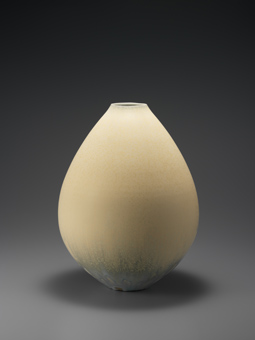 |
|
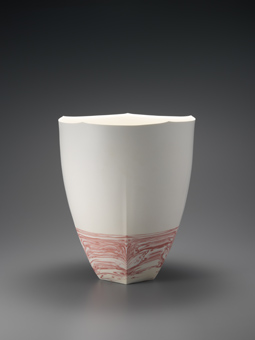 |
|
| After bisque-firing, Ryuji Iwasaki first sprayed a red iron oxide solution and then applied white glaze mixed with titanium to yield the warm cork color and matte finish of his exquisitely shaped Vase with yellow glaze. Tomoyuki Hoshino swirled manganese pink into a kaolin body for the marbled effect of his eggshell-thin Flower vase with marbled and jointed clay, a work so seamlessly crafted it's hard to believe it's formed from two pieces. Both received Honorable Mention. Photos by Shigeharu Omi / Toshiyuki Otsuka |
At a public critique of the works conducted on the exhibition's opening day, commentary by two members of the awards jury reinforced the sense that contemporary ceramics in Japan will only continue to diversify. Sandblasting, charring, the use of colored slips and the ways they are blended, the preparation of clays and glazes mixed variously with paint, titanium, or metal oxides to yield desired effects, the temperature at which pieces are fired, even the effective use of gravity to deform a piece before it enters the kiln -- each work on display tells a unique tale of genesis.
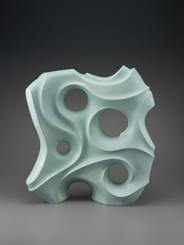 |
|
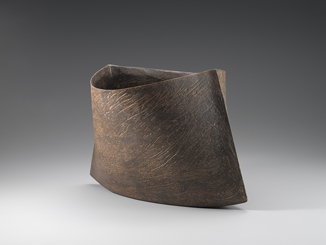 |
|
| In Nagaretatazumu 2, a breathtaking piece more than two feet tall, artist Ikuo Murakoshi freeze-frames a watery moment in time -- a split second in an endless swirl of motion. The effect of its unblemished glazing is so silky and cool, this reviewer wished the piece could be worn home like a tunic. In contrast, the curiously balanced Silence by Seoul-based artist Byong-uk Yeo has a raw, masculine texture that seems to be fashioned of leather, tree bark, or metal rather than clay. Photos by Shigeharu Omi / Toshiyuki Otsuka |
Besides the many visual delights on display in its darkened galleries, Musée Tomo offers quiet respite from Tokyo's relentless bustle at its restaurant, too. Open for lunch, dinner, and afternoon tea, the glass-walled Voie Lactée (it's named for the Milky Way -- you'll know why when you see its ceiling) juts out into a lush private garden landscaped with ancient trees, stones, and a pond. It's a good idea to book a table if you're combining lunch with your art outing, as this dining haven is no secret among workers in the area.
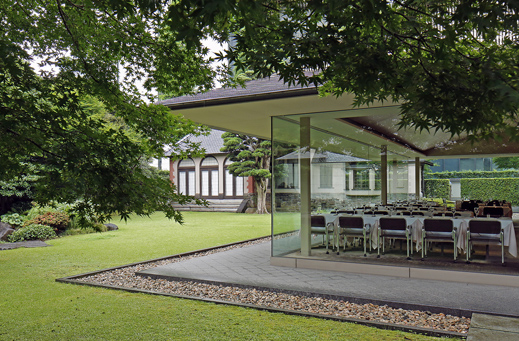 |
|
| Nestled among the glass-and-steel highrises of Toranomon, Musée Tomo's serene garden is bordered at one end by the Seiyokan, a circa-1924 residence and registered cultural property. Photo by Jeff Amas |
Musée Tomo will host two pottery-related weekend events in August. In a two-day workshop held August 3 and 4, children ages six to 15 can make figures in clay with potter Yasuyoshi Sugiura, known for his ceramic flowers, stones, and other works inspired by nature. After completion, participants' creations will be fired in Sugiura's kiln and shipped to them. On August 17, Toru Enomoto, director of the Museum of Modern Ceramic Art, Gifu, will deliver a lecture addressing the past few decades of contemporary ceramics in Japan, and what to expect from the growing field of present-day young artists. These events will be conducted in Japanese.
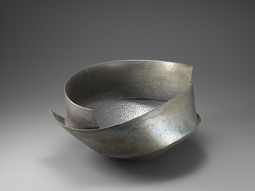 |
|
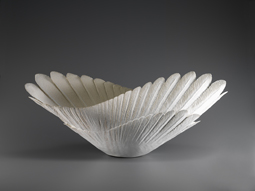 |
|
| The Generation Y factor: These works by the four youngest contestants -- artists who came of age together with the Internet -- speak for the diversity of method, form, and texture pursued today. Clockwise from top left: Kiritsugi (Cut and joint) by Kanjiro Moriyama (1984-), Hansyo (Flying) by Mari Mitarai (1985-), Taido (Clay) by Masahiro Wadayama (1985-), and girar -origin- by Kaori Masuhara (1985-). Wadayama's work received Honorable Mention for its complex glazing and relaxed balance of form. Photos by Shigeharu Omi / Toshiyuki Otsuka |
|
Designed in gemstone hues of purple and green, the first of the museum's two main galleries has a curving display that flows from golden hills in the distance. The second room, where larger, sculptural pieces are shown, is appointed in bold red and brown. Photos by Jeff Amas
All photographs by permission of Musée Tomo. |
 |
 |
Susan Rogers Chikuba
Susan Rogers Chikuba, a Tokyo-based writer, editor and translator, has been following popular culture, architecture and design in Japan for 25 years. She covers the country's travel, real estate, hospitality and culinary scenes for domestic and international publications. |
|
 |
|